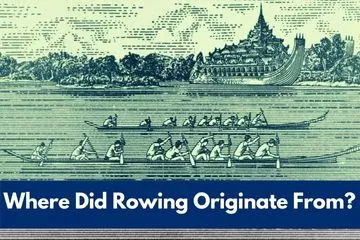
Hello friends! Have you ever thought about where and how some sports originated? For instance, when and where did the first recorded race in rowing take place?
The earliest account about rowing was written in Rome in 30-19 BC, contained in the pages of the epic poem The Aeneid by Virgil. It described rowing races in 800 B.C. While the Aeneid was not exactly ‘history’, it was a narration of glorious traditions and heroic deeds that mirrored events during those times.
I’ve always found history interesting and when it comes to sports, it’s more than a little bit surprising.
Did you know that soccer started with similar games held by the Mayans? Or that tennis began as a handball type of game back in 12th-century France?
All this talk of history leads to me to today’s article—the history of rowing.
It’s perhaps one of the oldest sports in the world, and it has a really interesting story to tell.
Let’s talk about the history of rowing and how it has changed (or not changed!) over the years.
Is Rowing the Oldest Sport in the World?
Well, foot races are probably the oldest sport that doesn’t require equipment. I mean, I’m betting that as soon as we started walking on two legs, we started trying to outrace one another!
As far as sports that require equipment of some type (balls, rackets, boats, sleds, etc.), rowing is perhaps the oldest sport of all.
You can imagine any river, lake, or even oceans where people needed to get from one side to the other. Someone realized that using a flat piece of wood could hold people and that a very long stick could push them across.
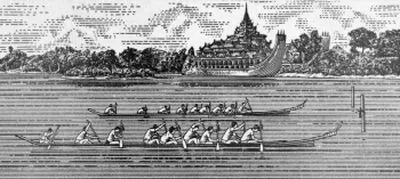
Later, that piece of wood was traded for a carved-out piece of wood that gradually got larger and larger. Sticks for propulsion became oars, and rowing was born.
Now imagine that you had a boat for hire to transport goods or people or animals. Why should someone hire you? Because you’re the fastest, right? How can you prove you’re the fastest boat on the water? Via rowing racing, or as we call them today, regattas.
Here are some of the earliest accounts on rowing and rowing races:
- Egypt has some terrific hieroglyphics showing boats with oars, rowers, and rudders for steering. The tomb of Pharaoh Amenhotep II (built around 1430 BC) has hieroglyphics depicting his great skill at rowing. Whether he actually held races is unknown.
- Rowing races were first written in Virgil’s epic poem The Aeneid, which was penned about 30-19 BC. It describes how people lived during those times (around 12th century BC), even mentioning a race between the Greeks and the men of Troy somewhere around 800 BC to honor the funeral of King Aeneas.
- The boatmen of England who offered taxi service to the people would boast that they had the lightest, fastest boat on the water. A competitive rowing event seems only natural. One of the first-named rowing competitions goes back to renaissance times in England, about 1454 AD when lords and ladies sponsored boats and crews to compete in a race called “Lord Mayor’s Water Procession.”
- The oldest, continuously held race (that is still offered annually) is the Doggett’s Coat and Badge regatta. This race has been held between London Bridge and Chelsea Harbor every year since 1715.
- The first competitive rowing event of more “modern” times took place in 1829 when the gentlemen of England officially created the Oxford Cambridge race.
- The Henley Royal Regatta started 10 years later in 1839.
- The first intercollegiate race took place in 1852 when Yale challenged Harvard to a regatta. This race greatly increased interest in the sport.
- In 1903, the Intercollegiate Rowing Association was formed and became the world’s first scholarly organization to create rules and an oversight committee.
So while we don’t have a definite date as to when Egyptians, Italians, English, or other countries and peoples officially began rowing races, we do know that this practice goes back farther than recorded history.
What Was the Most Famous Rowing Race?
That would probably be the Henley Royal Regatta in England, even long before it received the “royal” part of its name.
This famous race began in 1839 on the River Thames.
This regatta is so large that it takes six days to complete!
Don’t confuse this regatta with ones that are held in the same location but have different names, such as the Henley Women’s Regatta, the Henley Masters Regatta, and the Henley Town and Visitors Regatta.
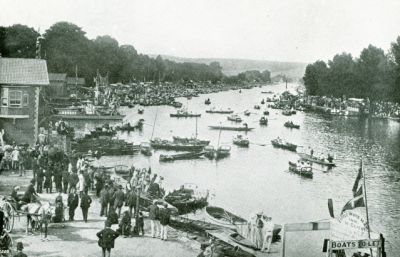
Finish line of the 1895 Henley Royal Regatta
By Young, Charles Van Patten (1907)
The most popular event at this regatta is the Grand Challenge Cup for the Men’s Eights. This cup has been handed out since the regatta began nearly 200 years ago.
Since the Henley Royal Regatta predates any known national or international rowing organizations (not including collegiate), it has its own governing body and set of rules.
There are many rowing events held annually in England, but this one is considered to be part of the English “social season”, and as such, there are strict dress codes.
Why Was Rowing Invented?
I think I gave away part of this answer above.
As soon as people realized that certain objects (usually wood) could float, one can only imagine that they immediately started sending objects across narrow bodies of water.
Perhaps they pulled the wood back and forth as needed, using vines or twisted plant material that would later become a rope.
I bet that someone later realized that they could sit or stand on that piece of wood and hold something in their arms, then be pulled across.
As time went on, someone may have realized that the water wasn’t very deep or was quite shallow during the summer months, and they would use a long stick to push the boat from one side to the other.
Knowing human resourcefulness, it’s quite easy to imagine how you could have constructed or carved out a boat to move stuff or people. A friend wanted to borrow it, but you refused because you worried that you won’t get it back and it took you months or even years to construct it.
Your friend then makes his own—I swear, there’s a race story happening right there! Take two people with two similar objects (horses, goats, boats), and they will want to race to see who is faster or better—human nature at work!
It’s our competitive nature that has kept our species alive for eons, right?
Of course, written records are easily destroyed or never written at all because the events didn’t seem important at the time, but it’s easy to imagine the above scenario.
Who Invented Rowing Boats?
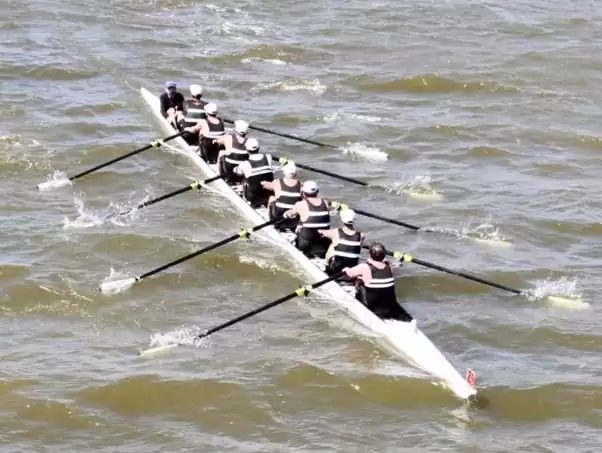
Some things in history are lost to us forever. However, some clues left behind can give us an idea as to where some inventions may have had their start.
We may never know who invented rowing boats, but several countries and people all claim to be the first.
The ancient Egyptians were at least the first to document that they had dug out dead or decayed trees and used them for transportation. When did they evolve from plain canoes to rowing boats is anyone’s guess (read more on canoeing vs rowing ).
The Native Americans had already mastered both dugout canoes and birch bark canoes when the pilgrims landed, but since they had no written history, we can’t know when they first started using them.
We do believe that it was the Greeks who first started using oars attached to rings. By using a fulcrum, they discovered that they could increase the amount of power generated by a rowing stroke.
The Greeks developed this rowing system about 2,000 years ago, but did they invent the row boat or just the oar handle? This remains unknown.
There are many theories as to who may have had the first rowing boat or the first recorded race, but regardless of where this sport began, the fact remains that this sport is unlikely to lose its popularity anytime soon.
Rowing Today
Rowing has now taken on a new life of its own with the invention of indoor rowing machines.

There are more ways to row, row, row your boat (or erg) than ever before in the history of rowing!
Below are just a few of the different ways that you can watch or enjoy rowing:
- Coastal rowing (sometimes called Open Water rowing)
- Sweep rowing
- Sculling
- Indoor rowing (using machines called Ergs)
- Beach sprint rowing
- Fixed seat rowing
- Canoeing (which is more paddling than rowing, but for some, this is considered rowing)
- Kayaking (which, again, is more paddling or sculling, but I’ve heard people defend this sport as rowing)
- Adaptive rowing (for the physically or mentally challenged)
Rowing is absolutely one of the most physically challenging sports you’ll ever try, but once you get the hang of it, you’ll never want to quit!
If you don’t have access to a body of water suitable for rowing, try indoor rowing. There is a wide range of machines for every lifestyle and space and every budget.
There are even World Championships for indoor rowers! Not many sports can claim that!
When Did Rowing First Occur in the Olympic Games?
Rowing was listed as an event in the modern-day Olympic games back in 1896. Unfortunately, extremely volatile weather prevented the event from taking place!
Imagine the disappointment of training for years only to have the event canceled!
With the start of the summer Olympics in 1900, rowing has been a major Olympic event and never needed to be scrapped ever again. Most likely because the games are now held later in the summer (usually in July) rather than in April, which was the time slot in 1896.
You may think that the ancient Greek Olympics would have had rowing, but believe it or not, they didn’t.
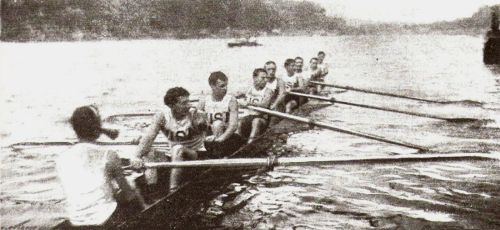
Men’s eight rowing team at the 1900 Olympic Games photography by User:FreeMO
In fact, team sports were never played during the ancient games because this went against what the Greeks thought of as sportsmanship.
The Greeks believed that each man was entitled to show what he was capable of and that he was stronger or faster than other men.
This isn’t to say that the Greeks and others didn’t hold rowing races because they certainly did, they just didn’t do it at the historic ancient Olympic games.
It was the Romans who enjoyed team sports and held a great many rowing races, relay races, and chariot races.
Which Country Has Won the Most Gold Medals for Rowing in the Olympics?
Believe it or not, it’s the United States who has won more gold medals than any other country with a whopping 33 gold medals for this sport!
The top rower of all time, however, would be Romania’s Elisabeta Lipa who has 5 gold medals. There is also British rower Steve Redgrave, who also has 5 gold medals. Lipa has 8 medals overall compared to Steve’s 6. So if you’re comparing gold, these two are tied, but if you are looking at all medals, Elisabeta Lipa is the clear winner.
Steve Redgrave is actually tied with Romania’s Georgeta Damian. Both have 5 gold medals and 6 medals overall.
Have Women Been Allowed to Row Throughout History?
No, not really.
For the majority of rowing’s history, this has been a male-dominated sport. This actually is fairly common in many sports, including running marathons.
Despite the fact that rowing has been included in the Olympics since 1896, women were not allowed to compete until the 1976 Olympic Games!
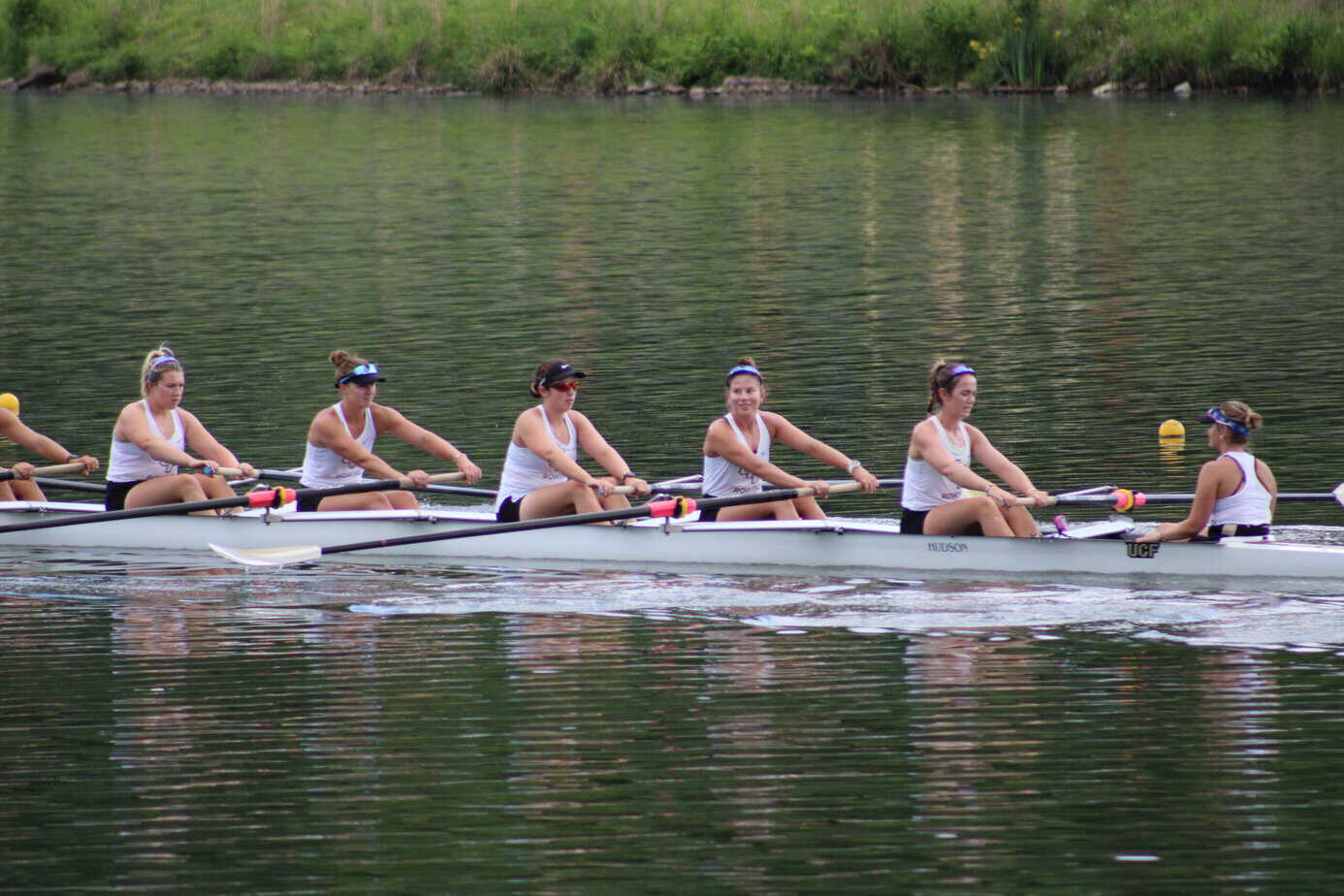
This is long after women were allowed to compete in other events, such as cycling, swimming, and even canoeing!
What most people don’t know is that women rowing unofficially began at least as far back as the 15th century. They’ve long competed in rowing but simply didn’t get much credit for it. Here’s what we know about some of these events:
- Duchess Beatrice D’Estes of Italy visited Venice in 1493. The local townswomen held a regatta that involved 50 local women.
- In Sweden, working women rowers were called Roddarmadams. They operated the ferries on the local waterways between the 15th and 19th centuries.
- In 1870, it was women rowing in double sculling races that made the cover of the famous magazine Harper’s Weekly in 1870, and in 1892, it was four women who started the San Diego, California-based rowing club ZLAC.
Women have always been involved in rowing, it’s just that we were not allowed to officially compete until much later.
I’m not really sure why the Olympics held out for so long, but we are here now, and we are here to stay.
The Bottom Line
The question of where did rowing originate or who made the first rowing boat may never be 100 percent known for certain, but you can gather that it most likely happened several thousand years ago in ancient Egyptian, Roman, or Greek times.
Rowing may be one of the most physically challenging sports, but that doesn’t stop thousands of people from taking part in all types of regattas, international championships, national championships, and masters championships around the globe.
If you’d like to learn more about how you can learn the art and sport of rowing, contact your local rowing club.
If you’d like to try indoor rowing, you might find this article helpful.
Start rowing and stay at it for a healthy, happy life!
Written by Petra Amara – RowingCrazy.com
CEO & Founder of RowingCrazy, National Rower, Coxswain Womens Eight Team, Rowing Coach & Writer
Petra is a Mother of two and owner of Rowingcrazy.com. Petra lives and breathes rowing, she also has a passion for writing which lead her to start RowingCrazy.com to share her rowing experience and expertise with others.





